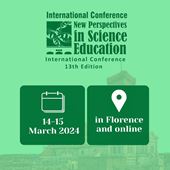Thinking on Education for Sustainable Development through Heritage and Technology: the “Art Nouveau Path” on the “EduCITY” App
Joao Ferreira-Santos, University of Aveiro, CIDTFF – Research Centre on Didactics and Technology in the Education of Trainers, Department of Education and Psychology (Portugal)
Lúcia Pombo, University of Aveiro, CIDTFF – Research Centre on Didactics and Technology in the Education of Trainers, Department of Education and Psychology (Portugal)
Abstract
Education for Sustainable Development is experiencing one of its most important moments, as the urge for Sustainable Development is one of the hottest topics of the present time. Since the middle of the 20th century, the relevance of new agents for Sustainable Development, such as Cultural Heritage, has been recognized and new ways of approaching this issue have been sought [1]. By recognizing the role of heritage as a potentiator of identity and memory [2], as well as space of learning [3], [4], it gained new possibilities when linked to technological solutions such as mobile learning. The triad of Education, Heritage and Technology reveals a set of potentials linked to the desire for innovation and originality, which are essential to arouse curiosity and engagement in students [5], [6]. In this sense, this paper seeks to conceptualize the mobile augmented reality game "Art Nouveau Path" in the "EduCITY" app as a framework for promoting Sustainable Education through the valorization of the Art Nouveau built heritage of the city of Aveiro (Portugal). Therefore, this work aims to i) briefly introduce the EduCITY project and its features, and ii) present and explore the “Art Nouveau Path” and its integrated educational resources towards Education for Sustainable Development. The second theme explores the potential of Art Nouveau as a style linked to nature and environmental concerns. Furthermore, given the characteristics of both the EduCITY app and the "Art Nouveau Path", the role of Augmented Reality in Education is briefly explored, as well as the role of innovation and curriculum development. To this end, a narrative literature review is conducted to map the available information on these issues and to stimulate new research. As the app and the game are still under development, it is expected that they will contribute to an effective awareness of environmental issues through the valorisation of heritage and with an impact on Sustainable Development within an innovative educational proposal.
|
Keywords |
Cultural Heritage; Education for Sustainable Development; Augmented Reality Games; EduCITY; Art Nouveau Path |
|
References |
[1] L. Smith, Uses of Heritage. Routledge, 2006. [2] F. Choay, Alegoria do Património, 3rd ed. Edições 70, 2019. [3] ICOMOS, “The Charter of Krakow 2000: principles for conservation and restoration of built heritage,” 2000. [Online]. Available: http://hdl.handle.net/1854/LU-128776. [4] Council of Europe, European Charter of the Architectural Heritage. 1975. [5] J. Hosagrahar, J. Soule, L. Girard, and A. Potts, “Cultural Heritage, the UN Sustainable Development Goals, and the New Urban Agenda,” BDC. Boll. Del Cent. Calza Bini, vol. 16, no. 1, pp. 37–54, 2016, doi: https://doi.org/10.6092/2284-4732/4113. [6] UNESCO, Reimagining Our Futures Together: A New Social Contract for Education. 2021. |
 New Perspectives in Science Education
New Perspectives in Science Education





























